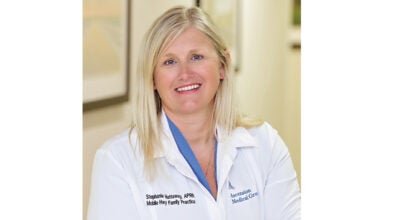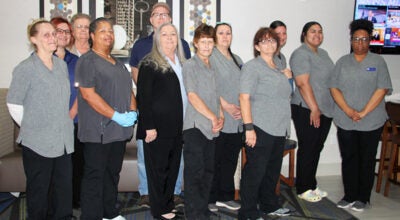County ranks 4th in teenage pregnancy
Published 12:03 am Wednesday, April 23, 2014
Covington County ranks fourth in the state for teen pregnancies, according to data presented to the Children’s Policy Council on Tuesday.
In 2012, which is the most recent data released, the county boasted a 41.7 percent teen pregnancy rate, with 93 teen pregnancies.
There were 75 teen births, or a rate of 33.6 per 1,000 teen females.
According to data from the Center for Health Statistics, two pregnancies were terminated by abortion, and there were an estimated 16 fetal losses.
Statistics also show that 58 of those births represent babies born to white females ages 10-19, and 17 babies born to black women and other races in the same age range.
Specifically speaking, 22 of the births were to teens who live in the 36420 zip code; 20 in the 36421 zip code; five in the Florala area; 19 in Opp and seven in Red Level.
The teen pregnancy rate was up from 40.1 the year before, but substantially lower than the 2009 high of 57.5 percent.
Only Fayette, Cleburne and Bullock counties have higher teen birth rates than Covington County.
Christina Clark, policy and training coordinator for the Alabama Campaign to Prevent Teen Pregnancy, said her organization is teaming up in 2014 with counties which have higher birth rates to implement educational programs to curb the number of teen pregnancies.
Clark explained to CPC members there are a number of programs ranging from abstinence programs to contraceptive informative programs that could be implemented.
“All of our programs are evidence-based programs,” she said. “These provide medically accurate and age-appropriate sexual health education.”
CPC members learned that the programs are effective at changing four sexual risk-taking behaviors, including delaying sexual debut, decreasing the frequency of sex, increasing condom and contraceptive use and decreasing the number of sexual partners.
The 2013 Youth Risk Behavior Survey found that nearly half of Alabama teens have had sexual intercourse in their lives; two in 10 teens have had four or more sexual partners; and nearly half of sexually active teens did not use a condom during their last sexual intercourse.
Clark told CPC members that most of the students who participate in one of their education programs leave with the intention to wait to have sex, have fewer sex partners or promise to use a condom.
CPC members agreed there is a necessity to reach out to the county’s children, but said there is often trouble getting into the schools.
“It has been an issue to get into the schools to talk to kids about abstinence,” said Susan Short, CPC director.
Others agreed.
“All the teachers work on deadlines,” said Jan White of Sav-A-Life. “They can’t give us but an hour of time except once or twice to speak about abstinence.”
CPC chairperson Trippy McGuire said that civic clubs, in the past, have helped with similar efforts to help promote awareness of teen pregnancy and the consequences.
“People do not want a child to grow up without a mom and dad,” he said. “I think our county would be behind this.”
Members said health and physical education classes might be good places to incorporate the education into the schools.
Clark said the curricula were very engaging with DVDs, posters and participant interaction, and that the cost was around $600 per set.
“We’re past acting like this isn’t a problem,” Short said.




